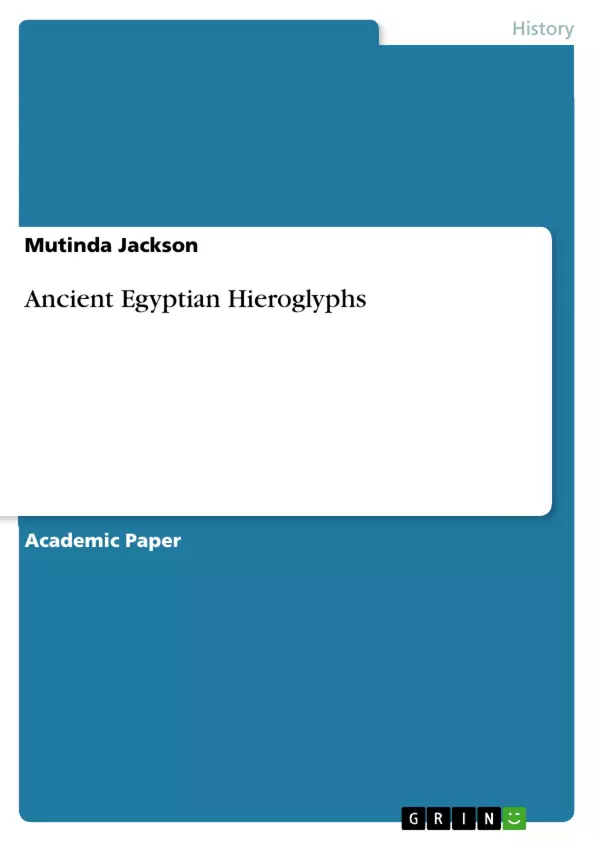Remarkably, the ancient Egyptians have been noted to have applied writing as a form of communicating information about an individual shown on a relief or sculpture. According to several scholars and historians, the Egyptians termed their writing as a divine word since they believed that Thoth, who was the god of wisdom, was responsible for their knowledge of writing (The British Museum 3). In this sense, the word hieroglyphs has been derived from a phrase that refers to sacred carvings which was used by the ancient Greek explorers to Egypt in describing the symbols which they saw on temple and tombs walls. Arguably, the number of hieroglyphic signs that were used in Egypt gradually grew to more than seven thousand, even though not all of these signs were regularly used. Hieroglyphs were selected from a variety of observed images such as people, buildings, birds and even trees. Moreover, some of these signs represented ancient Egyptian language sounds, although they represented consonants only; vowels were not written out. Scholars also note that these sounds did not take an alphabetic order because a single sound had the potential of representing a combination of two or even more consonants, for example, the gaming-board hieroglyph that represented the consonants mn (The British Museum 4). According to Egyptologists, these sounds are made pronounceable by placing an e in between the consonants such that mn will be read as men. However, several hieroglyphic signs were not pronounced at all, yet they played significant roles in clarifying meanings, for instance, a boat that follows the sign dpt-standing for the word boat.
Table of Contents
- Hieroglyphs
- The Nature of Hieroglyphs
- The Origins and Significance of Hieroglyphs
- Phonograms and Ideograms
- The Use of Determinatives
Objectives and Key Themes
This text explores the fascinating world of ancient Egyptian hieroglyphs, focusing on their origin, development, and function as a form of written communication. It delves into the intricate system of glyphs, analyzing their phonetic and semantic values. The text also discusses the evolution of hieroglyphic writing, highlighting the role of determinatives and their importance in clarifying meaning.
- The evolution and history of hieroglyphic writing
- The structure and function of hieroglyphic signs
- The distinction between phonograms and ideograms
- The role of determinatives in clarifying meaning
- The influence of hieroglyphs on popular culture and understanding of ancient Egypt
Chapter Summaries
The text begins by introducing the concept of hieroglyphs as a divine word and sacred carvings, explaining their origin and significance within ancient Egyptian culture. It discusses the development of the hieroglyphic system, emphasizing the use of consonants and the lack of vowels in the written language.
The text further explores the two main categories of hieroglyphs: phonograms and ideograms. It explains how phonograms represent sounds, while ideograms represent objects or ideas. The chapter then focuses on the use of determinatives, which are symbols placed after a word to clarify its meaning.
The text concludes by discussing the impact of hieroglyphs on popular culture and the significance of the Rosetta Stone in deciphering the ancient language. It emphasizes the influence of hieroglyphs on art, film, and literature, highlighting their enduring legacy.
Keywords
This text focuses on the key concepts of ancient Egyptian hieroglyphs, examining their structure, function, and cultural significance. It explores terms like phonograms, ideograms, determinatives, and the Rosetta Stone, providing insight into the development and deciphering of this ancient writing system.
- Quote paper
- Business Administrator Mutinda Jackson (Author), 2018, Ancient Egyptian Hieroglyphs, Munich, GRIN Verlag, https://www.grin.com/document/429536



